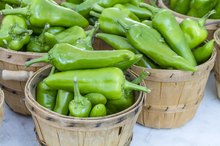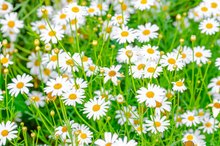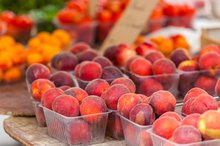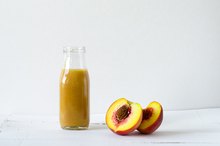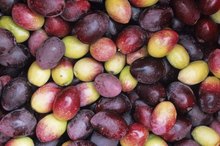Nutritional Value of Edible Flowers
You've probably heard the sage advice to stop and smell the roses, but perhaps you should also stop and eat the roses. Many types of flowers are edible and supply a wealth of key nutrients necessary for good health. Don't randomly pop blossoms into your mouth, however, because some varieties of flowers, such as foxglove and crocus, are poisonous. Seeking out safe edible flowers is a good way to boost your intake of certain nutrients, as well as add a splash of color to your meals.
VIVs: Very Important Vitamins
Most edible flowers supply vitamin C, a nutrient that helps stave off infections. A cup of raw borage, for example, delivers 31.2 milligrams of vitamin C, which is about 42 percent of the 75 milligrams women need each day and 35 percent of the 90 milligrams men require daily. Nasturtiums are another flower source of vitamin C, and contain 10 times more vitamin C than lettuce, according to the "Vineyard Gazette." Nasturtiums also supply small amounts of vitamin D. A cup of pumpkin flowers supplies 643 international units of vitamin A, a nutrient essential for healthy eyes. That amount is equal to 28 percent of the 2,300 IU of vitamin A women need daily and 21 percent of the 3,000 IU men require each day. Rose petals provide small amounts of vitamin E, and lavender is another source of vitamin A, according to "The Mindful Word" magazine.
Much-Need Minerals
Marigold Flower Activities for Kids
Learn More
Many types of edible flowers, such as chrysanthemum, dianthus and viola, contain a good dose of potassium, according to a 2012 article published in the journal "Molecules." Potassium is a mineral that supports proper heart and muscle function. A cup of borage provides about 3 milligrams of iron, which is slightly more than one-third of the 8 milligrams men need and slightly less than one-fifth of the 18 milligrams women require each day. Iron helps your body make energy and promotes normal oxygen transport. Pumpkin and sesbania flowers supply small amounts of iron, and lavender and borage each provide small amounts of bone-building calcium.
Phytochemicals and Antioxidants
The vivid colors of edible flowers suggest the presence of beneficial compounds called phytonutrients, flavonoids and antioxidants, all of which can lower your risk of certain health problems such as cancer and heart disease. Marigolds, also called calendula, for example, contain flavonoids, which help protect your cells from damage, according to the University of Maryland Medical Center. Marigold flowers also contain more lutein and zeaxanthin than collards, kale or spinach, according to Elson M. Haas, author of "Staying Healthy With Nutrition, 21st Century Edition." Nasturtiums also contain lutein and zaexanthin. Both of these compounds can help protect your eyes from age-related disorders. Violets are a source of rutin, which promotes blood vessel health and reduces inflammation. Chrysanthemums are another edible flower source of antioxidants.
Edible Flowers in Your Diet
Green Chile Nutrition
Learn More
It's essential to properly identify flowers before you eat them. Grow your own edible flowers as one way to ensure your safety. Always look for the word "edible" on the packaging, which indicates the flowers are safe to eat. Introduce new flowers to you diet in small quantities to be sure they don't cause an allergic reaction or stomach upset, and always choose flowers that weren't treated with pesticides. Add edible flowers to tossed green salads or layer them into a sandwich. Preserve edible flower petals in oils and vinegar or paint them with an egg-white wash, sprinkle them with sugar and store them in an air-tight container.
Related Articles
References
- Colorado State University Extension: Edible Flowers
- Molecules: Edible Flowers -- A New Promising Source of Mineral Elements in Human Nutrition
- University of Maryland Medical Center: Calendula
- Vineyard Gazette: Nasturtiums and Nature's Nutrients
- Staying Healthy With Nutrition, 21st Century Edition; Elson M. Haas
Writer Bio
Sara Ipatenco has taught writing, health and nutrition. She started writing in 2007 and has been published in Teaching Tolerance magazine. Ipatenco holds a bachelor's degree and a master's degree in education, both from the University of Denver.

